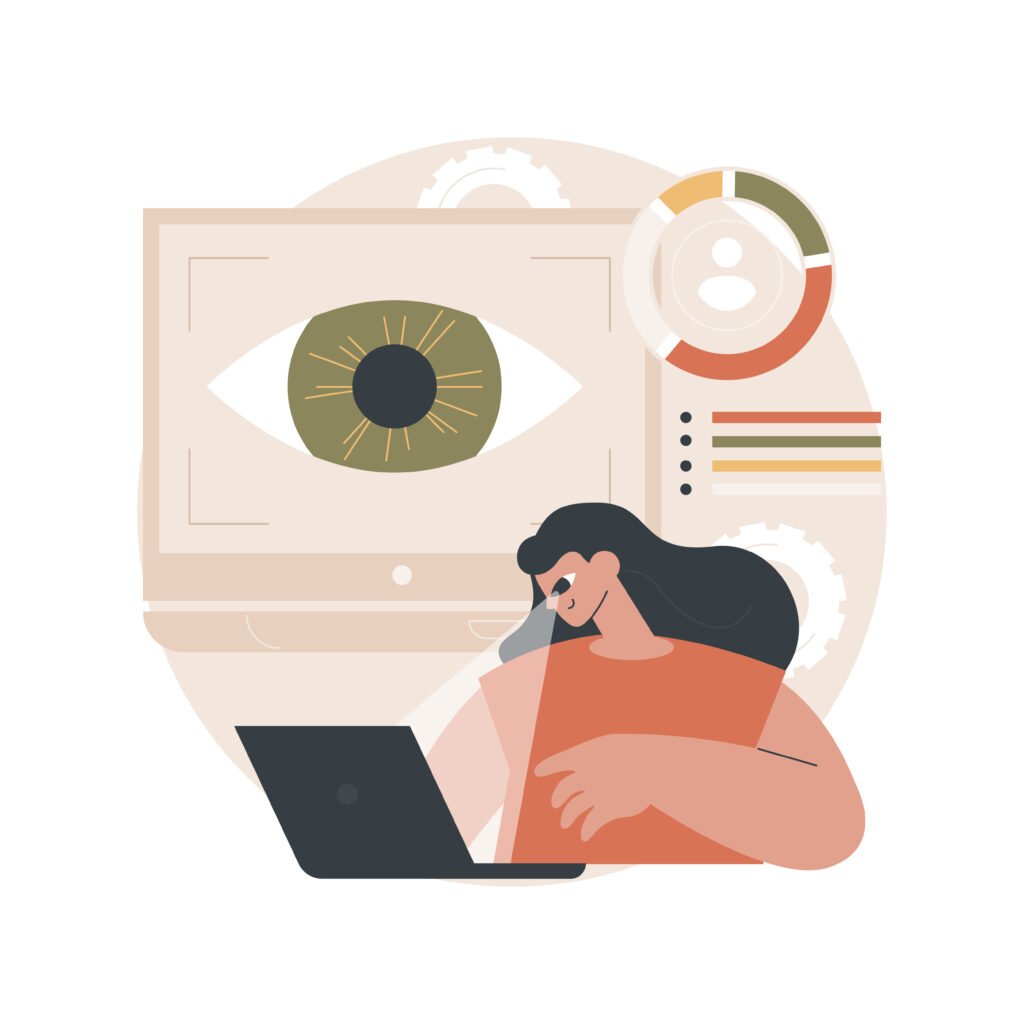The Future of Computer Vision: Applications For Image Recognition
8 Dec 2023
Igor Kelly

What is computer vision? It refers to systems that recognize objects in digital still and moving image material and process them accordingly, allowing machines to analyze and make sense of images or videos, providing a visual understanding of the world. Computer vision has developed significantly over the past twenty years; today’s computer vision systems achieve an accuracy of 99% and are also available on mobile devices.
The breakthrough came in 1998 with Yann LeCun’s LeNet-5 (a seven-stage convolutional neural network that recognizes handwritten numbers in digitized images with a resolution of 32×32 pixels). This model has been purposefully expanded: today’s image classification systems recognize entire object catalogs in HD resolution and color.
Computer vision encompasses all algorithms that analyze and interpret images or videos. It is a separate field of artificial intelligence that can be divided into four main categories:
- Classification. A classification algorithm inputs an image to classify from a list of possibilities. An algorithm determines, for example, what animal species belong to based on a photo that falls into this category.
- Recognition. The goal here is to recognize the position of certain objects in an image. The objects «to be recognized» have been determined in advance; there is no need to recognize additional objects. The presence of these objects is usually roughly represented by a rectangle and a name on the image.
- Identification. Identification is used to recognize an object (often a person). The difference from the previous algorithms is that this algorithm can distinguish between two different people.
- Segmentation. This algorithm aims to delineate the boundaries between the different objects in an image and classify them.
In healthcare, it aids in medical image recognition; in manufacturing, it improves quality control; and in retail, it facilitates augmented and virtual reality experiences and smart surveillance, showcasing its versatile impact on enhancing processes and decision-making through visual data interpretation.
Emerging Computer Vision Applications
Understanding how computer vision and AI are related involves recognizing that AI techniques, particularly machine learning, serve as the intelligence backbone, enabling computer vision applications to learn and recognize patterns in images and videos.
While visual information processing technologies have been around for some time, much of the process required human intervention and was time-consuming and error-prone. For example, when implementing a facial recognition system in the past, developers had to manually annotate thousands of images with key data points, such as the width of the bridge of the nose and the distance between the eyes.
Automating these tasks required extensive data processing power because image data is unstructured and complex for computers to organize. Computer vision applications were inconceivably expensive and unaffordable for most companies.
Today, computer vision systems based on cloud computing resources are now affordable to everyone. Any company can use the technology for identity verification, content moderation, streaming video analysis, error detection, and more. Now, let’s examine a few computer vision applications in different industries.
1. Healthcare
Computer vision is used in medical image analysis for diagnosing diseases from radiological images, such as X-rays and MRIs. Healthcare providers obtain the following benefits:
- Accurate diagnoses. Computer vision assists in identifying and diagnosing medical conditions with high precision, reducing the risk of human error. For example, the algorithm can detect skin cancer by analyzing dermatoscopic images, reducing the risk of misdiagnosis and improving early detection rates.
- Time efficiency. In preventive diagnostics, it can be the difference between a timely intervention that saves a life and a prolonged wait that heightens anxiety and potentially allows a condition to worsen. Automated image analysis speeds up the diagnostic process, allowing healthcare professionals to focus more on patient care.
- Enhanced treatment planning. Artificial intelligence aids treatment planning by providing detailed insights into medical images. For example, AI analyzes MRI scans to identify subtle tumor characteristics, enabling oncologists to tailor precise and personalized treatment plans for cancer patients.
2. Marketing and advertising
In marketing research, computer vision is used for facial recognition and emotion analysis, helping advertisers understand consumer reactions to ads. Marketers use computer vision and AI in the following areas:

- Targeted advertising. Understanding consumer emotions allows for creating targeted and emotionally resonant advertising campaigns. For example, a smart home device company used computer vision to analyze user reactions in response to different scenarios, tailoring advertisements to evoke positive emotions such as joy and convenience by showcasing the device’s seamless integration into daily life.
- Market research insights. Neural networks enable the extraction of valuable insights from consumer reactions, informing marketing strategy and product development. By analyzing consumer facial expressions such as satisfaction, engagement, and frustration levels, marketers can guide product development to address user preferences and concerns.
3. IoT and manufacturing
Understanding how computer vision and AI are related is crucial for grasping the full potential of emerging technologies in fields such as robotics and autonomous systems. AI-driven computer vision algorithms are utilized in quality control on manufacturing lines, identifying product defects through visual inspection. IoT add-ons lead to the following business benefits:
- Reduced defects. Early detection of flaws in real-time minimizes the production of faulty products, improving overall product quality. For example, a manufacturing plant relied on manual inspection for product quality. After implementing automated computer vision systems, defects were detected with greater accuracy and speed, reducing production errors by 30% and significantly improving overall product quality.
- Increased efficiency. Automation of quality control processes speeds up production cycles, leading to higher throughput and reduced operational costs. Before automation, one large factory manually inspected each product for defects, causing delays and increasing labor costs. After implementing automated quality control systems with computer vision, inspection time was reduced by 50%, throughput increased by 20%, and operational costs decreased by 15%.
4. Retail and e-commerce
Computer vision is utilized for visual search and augmented reality in online retail, allowing users to find products or virtually try them before purchasing. The technology provided retailers with the following benefits:
- Enhanced customer experience. Computer vision and augmented reality create a more interactive and engaging shopping experience, increasing customer satisfaction. Research shows that 61% of consumers prefer stores that use augmented reality (AR), and 71% say they’d shop more if AR is involved.
- Reduced returns. Due to uncertainty, 19% of consumers have to order multiple sizes and options of one product. Virtual try-on features solve this problem and help customers make more informed purchasing decisions, thus reducing the likelihood of returns.
These real-world applications demonstrate the importance of computer vision in business, entertainment, transportation, healthcare, and everyday life. Data-driven organizations increasingly rely on advanced data science solutions to extract valuable insights from smartphones, cameras, and other visually digitized devices.
Top 5 Computer Vision Challenges
Computers still have the problem of processing incomplete visual data. While humans can fill in the gaps based on their experiences and logical assumptions, computers have not yet reached this level of intelligence.
With the growing demand for automation and enhanced visual intelligence, businesses are integrating computer vision services to improve business processes and decision-making. Given our experience in the field, we’ve compiled the five most well-known technology limitations and provided a few possible advice on how to address them.
| Limitation | Challenge description | How to address the limitation |
| Lack of robustness | Computer vision systems may struggle with robustness, being sensitive to the visual perception of lighting conditions, angles, and unexpected objects in the scene. | Enhance training datasets to include diverse scenarios, implement data augmentation techniques, and explore robust model architectures. |
| Limited contextual understanding | Understanding context in complex scenes remains a challenge, as computer vision algorithms may struggle to grasp the nuanced relationships between objects and their surroundings. | Incorporate contextual information through advanced models like contextual neural networks or by leveraging semantic segmentation techniques. |
| Data bias and generalization | Models may exhibit bias due to imbalanced or insufficient training data, impacting their ability to generalize accurately across diverse scenarios. | Employ adversarial training to mitigate bias, and regularly update computer vision models with new representative data. |
| Interpretability and explainability | Achieving transparency and interpretability in complex deep learning models can be challenging, hindering users’ ability to trust and comprehend system decisions. | Explore interpretable model architectures, utilize explainability tools, and adopt model-agnostic approaches to enhance the interpretability of computer vision systems. |
| Real-time processing constraints | Real-time processing demands for certain applications, such as autonomous vehicles, pose challenges due to the need for high-speed computations. | Optimize computer vision algorithms and models for efficiency, leverage hardware accelerators, and explore visual computing solutions to enhance real-time processing capabilities. |
The Future of Computer Vision
Some tasks that once took hundreds of people many months to complete can now be completed in a fraction of a minute, thanks to computer vision and AI.
No wonder projections show that the global AI software market could reach $126 billion in revenue by 2025. Let’s examine some of the most promising trends in the future of computer vision.

1. Lightwear architecture
Next year, there’s a growing focus on edge computing in computer vision future, processing visual data directly on devices like smartphones and IoT sensors for real-time analysis. Future trends will likely lead to compact, efficient computer vision applications suitable for low-power devices, benefiting areas like manufacturing and security. These applications, requiring lightweight AI models, can operate on devices with limited processing power.
While models like R-CNN are accurate for pattern recognition, they demand heavy computational resources. In contrast, lightweight AI architectures like YOLO are better suited for edge devices. Similarly, the SSD object detection algorithm, known for high accuracy and real-time performance, is popular in applications such as autonomous vehicles and surveillance systems.
2. Explainable AI
There is a growing emphasis on developing transparent and interpretable AI models for increased trust and accountability in computer vision. Advanced imaging with explainable AI ensures that healthcare professionals can understand and trust the decisions made by AI systems in diagnosing diseases from X-rays or MRIs.
One study suggests an innovative use of AI and computer vision for swift and efficient breast cancer diagnosis. Furthermore, computer vision future lies within operating rooms by monitoring surgical procedures, tracking instrument locations, and ensuring accurate surgeries. Additionally, the healthcare landscape is witnessing a rise in the use of augmented reality for guiding and even performing remote surgeries.
3. Computer vision in retail
In 2024, we anticipate a heightened integration of computer vision technology in the retail sector, following Amazon’s lead in introducing cashier-less stores like Go grocery stores. This trend is set to expand with Tesco launching the first checkoutless supermarket in the UK. Beyond streamlining the checkout process, computer vision finds diverse applications in retail, such as optimizing inventory management by automatically monitoring and replenishing stock.
Visual data processing also aids in analyzing customer movement patterns to enhance store layouts, contributes to security systems, and enables customers to access product information by scanning barcodes with their mobile phones.
The potential transformations in human-computer interaction (HCI) extend beyond convenience to redefine how we perceive, communicate, and collaborate with machines. These developments promise to make computer vision an even more integral and harmonious part of our daily lives, ushering in an era where human-computer interaction becomes not just a tool but an intuitive and immersive experience.
Conclusion
From facial recognition to processing what happens at a football game, the future of computer vision is equal to or superior to human vision in many areas.
But keep in mind that we still face multiple computer vision challenges: for example, some model decisions are difficult to analyze, and errors are sometimes difficult to detect. Furthermore, it is not clear whether deep learning methods can solve specific problems that go beyond collected data.
Our experts will happily help you harness the exciting potential of computer vision and find the most effective way to utilize technology in your business!